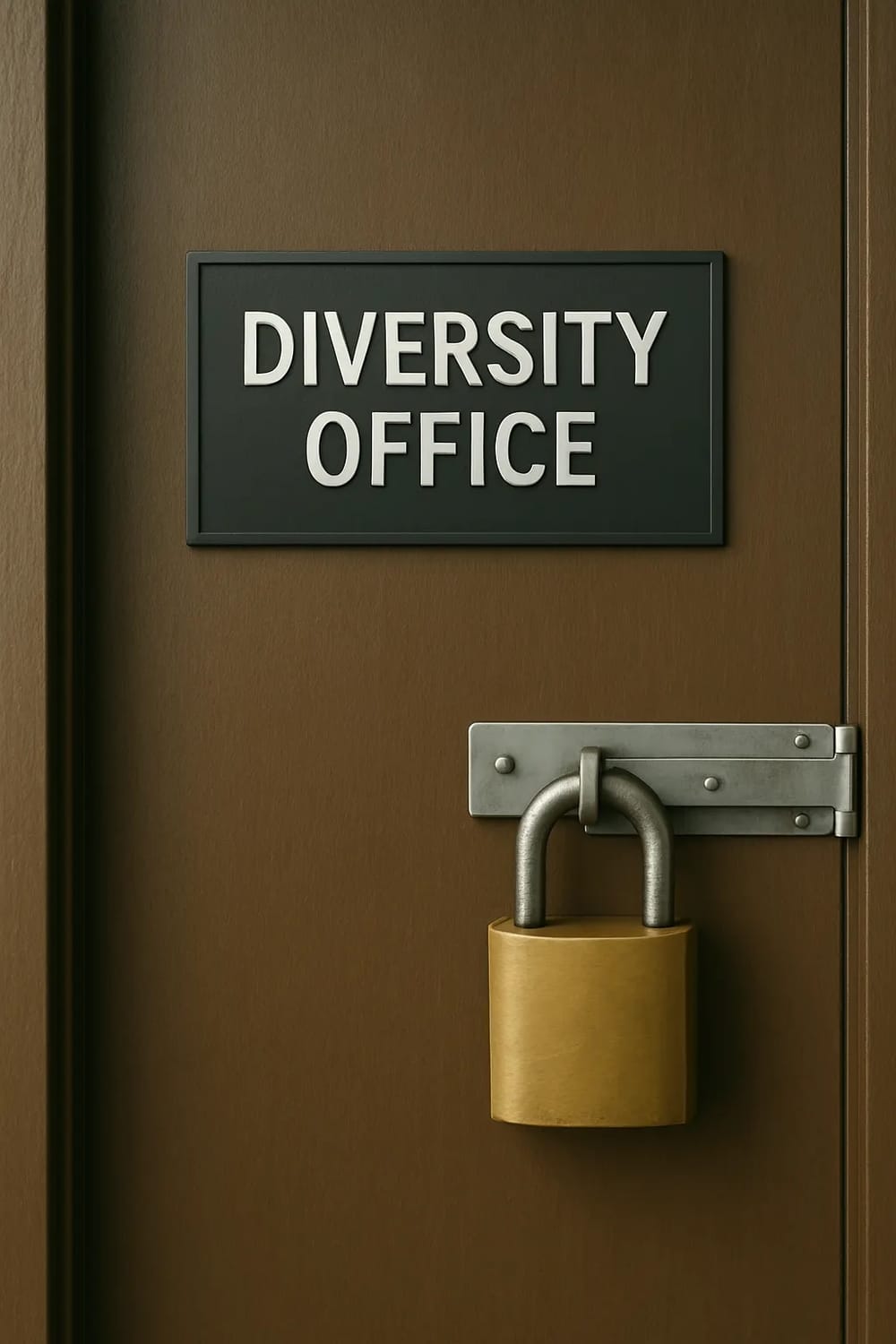The letters D, E and I — once synonymous with progress and a world where we all participate — are vanishing from corporate websites, annual reports, and university office titles at a rapid pace. Mostly under the promise (not threat) that the administration will sue anyone who ever dares keep such programs.
A recent analysis found that mentions of “DEI” in Fortune 100 companies’ filings plummeted by 72% from 2024 to 2025.
Everyone from law firms, manufacturers, consumer goods companies and department stores have dropped diversity and equity from their mission statements.
In higher education, a parallel shift has been underway for a while. Institutions across dozens of states have dissolved formal “DEI” offices. My own alma mater Ohio State being one of them.
But beneath the fear of Trump’s assault on diversity programs, a quiet revolution is taking place.
I had a chance to sit down with a former diversity and inclusion chair at a major university on the east coast, and what I learned wasn’t what is being reported. These universities didn’t undo all of their diversity and inclusion efforts.
In fact, those efforts, while dented, are alive and well.
One general counsel for a major university told me that while they could no longer could award scholarships or blatantly target enrollment based on race or some other designations, their efforts to ensure their Black and other marginalized students weren’t ignored were alive and well. It’s just taking some human creativity.
The University of Maryland, for example changed their diversity office to the Office of Belonging and Community. The rebranded office still oversees key inclusivity-focused resources including the LGBTQ+ Equity Center, the Nyumburu Cultural Center, the Office of Multi‑Ethnic Student Education, Bias Incident Support Services, and ADA compliance — ensuring support for marginalized and underrepresented groups remains central.
Duke University in May 2025 advanced the concept of “inclusive excellence” in its core messaging — shifting how inclusion is framed publicly, moving away from explicit DEI terminology. This mere linguistic evolution signals a commitment to inclusion that is integrated into broader academic and cultural frameworks rather than siloed as a standalone initiative. DEI was already so embedded in Duke’s fabric that it wasn’t going to abandon it.
Mississippi State University likewise rebranded its Division of Access, Diversity, and Inclusion to the Office of Community and Belonging, keeping inclusion and belonging as a strategic priority. Kansas State University changed the name of its Office of Diversity, Equity, Inclusion, and to Access and Opportunity, Though the label changed, the office continues to support underserved students through access initiatives — showing continuity in purpose under a different name.
Numerous other institutions across every geographic part of the U.S. have followed suit. Even universities and colleges which dissolved their official diversity offices continue to focus on ensuring they serve marginalized communities.
The same is happening in much of corporate America.
It turns out, among S&P 500 firms, while the use of the acronym DEI dropped a staggering 68%, something interesting is happening place in its place. Board committee oversight for inclusion climbed from 72% to 79%.
Take Salesforce. They dialed down DEI branding in press materials but continue to invest heavily in equitable hiring, supplier diversity, and racial justice grants.
Microsoft now frames inclusion under the broader umbrella of “culture and growth,” yet their internal diversity reporting and targeted recruitment remain robust.
At Walmart, the term “diversity” may not headline initiatives, but equity programs for frontline workers, language access, and rural community outreach continue without pause. These companies have recalibrated their tone — not their values.
Companies across the U.S. may have abandoned their DEI initials, but many culturally remain committed to the same principles as they did before Trump’s obsession.
Let’s not misunderstand. This administration has negatively impacted Black and other marginalized communities through its assault on diversity and equity.
Cultural and multicultural centers at universities like Kent State and others in Ohio have been shut down due to new state laws banning DEI programs — undercutting spaces that students of color relied on for academic support, community, and a sense of belonging.
At the University of Cincinnati, race-based medical school scholarships — critical to addressing the dire underrepresentation of Black doctors — have come under threat, putting millions in funding for future Black physicians at risk.
And at the federal level, executive actions stripped DEI offices across government, purged educational content on critical historical and minority figures, and placed staffers leading inclusion efforts on leave — all in an effort to erase the institutions of equity themselves.
Nobody should claim things remain the same.
Still, the sky is not entirely falling.
There’s still a large chunk of corporate and educational America that understands the deep value in ensuring everyone has a fair shake in a world not always kind to everyone.
We should patronize those companies and support those institutions which haven’t given up on America.
